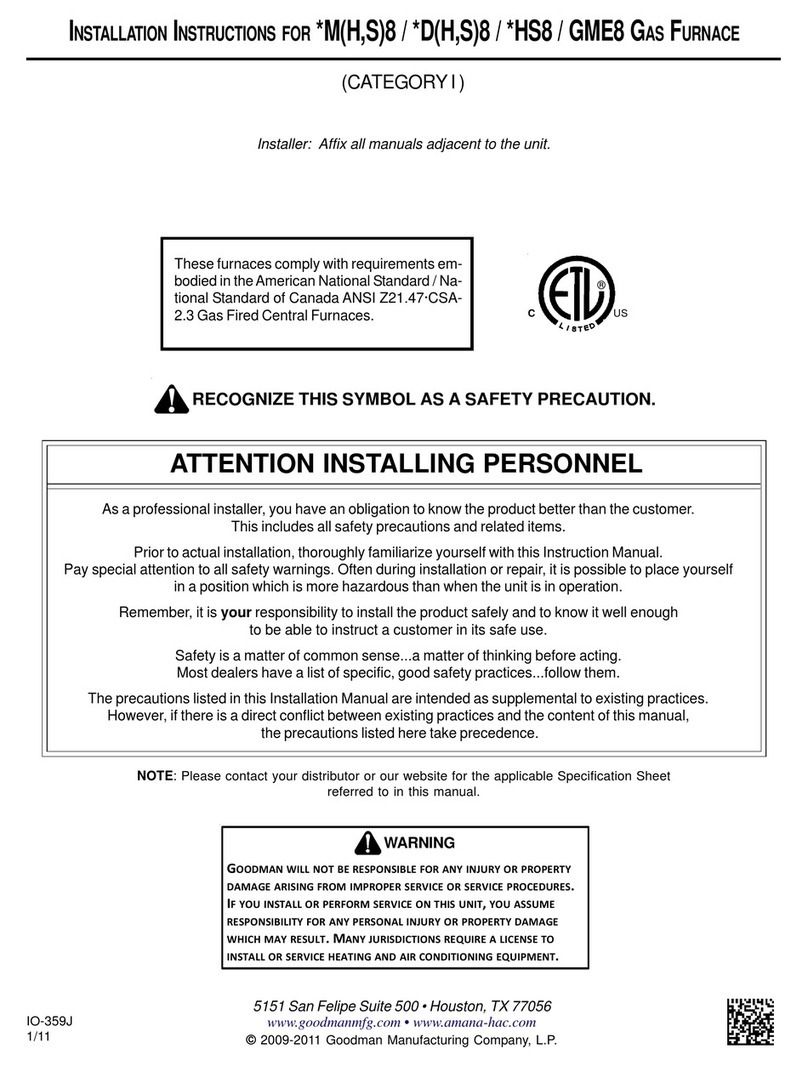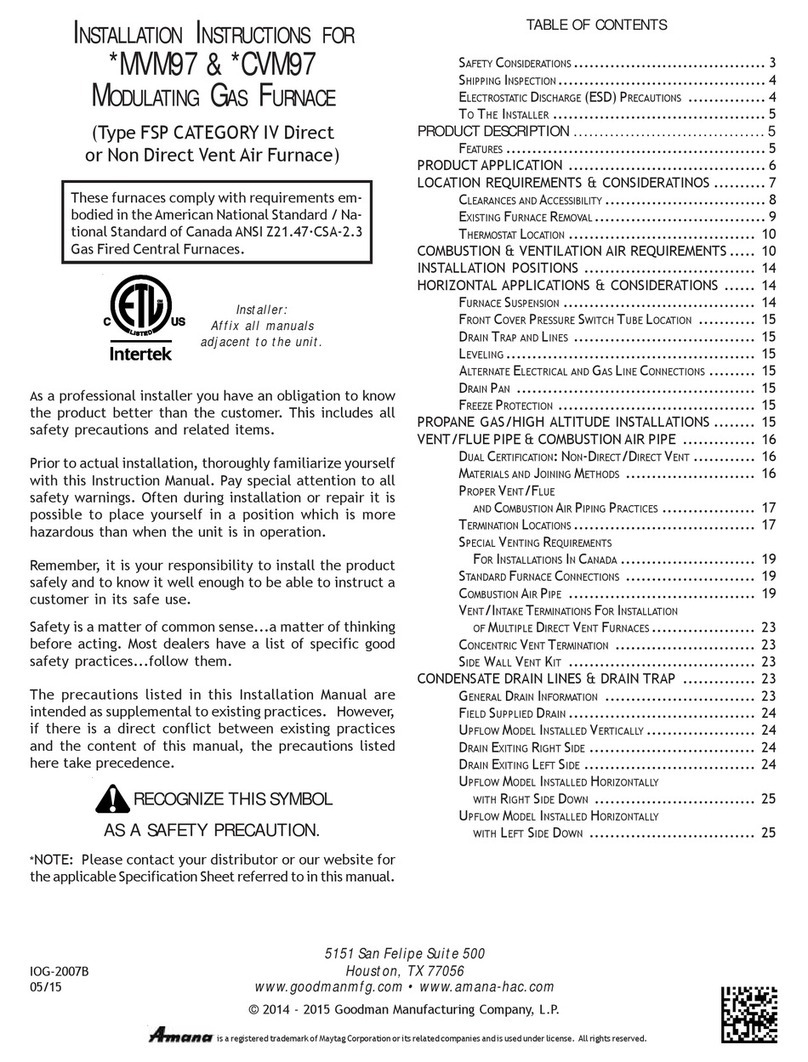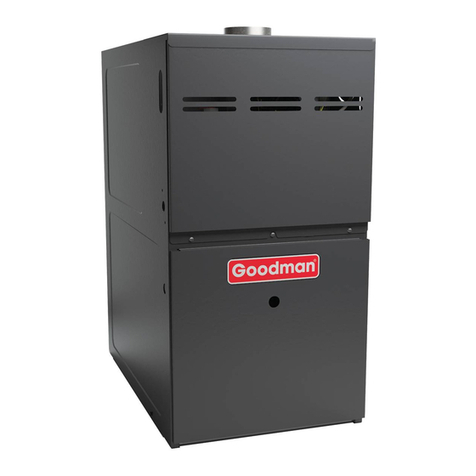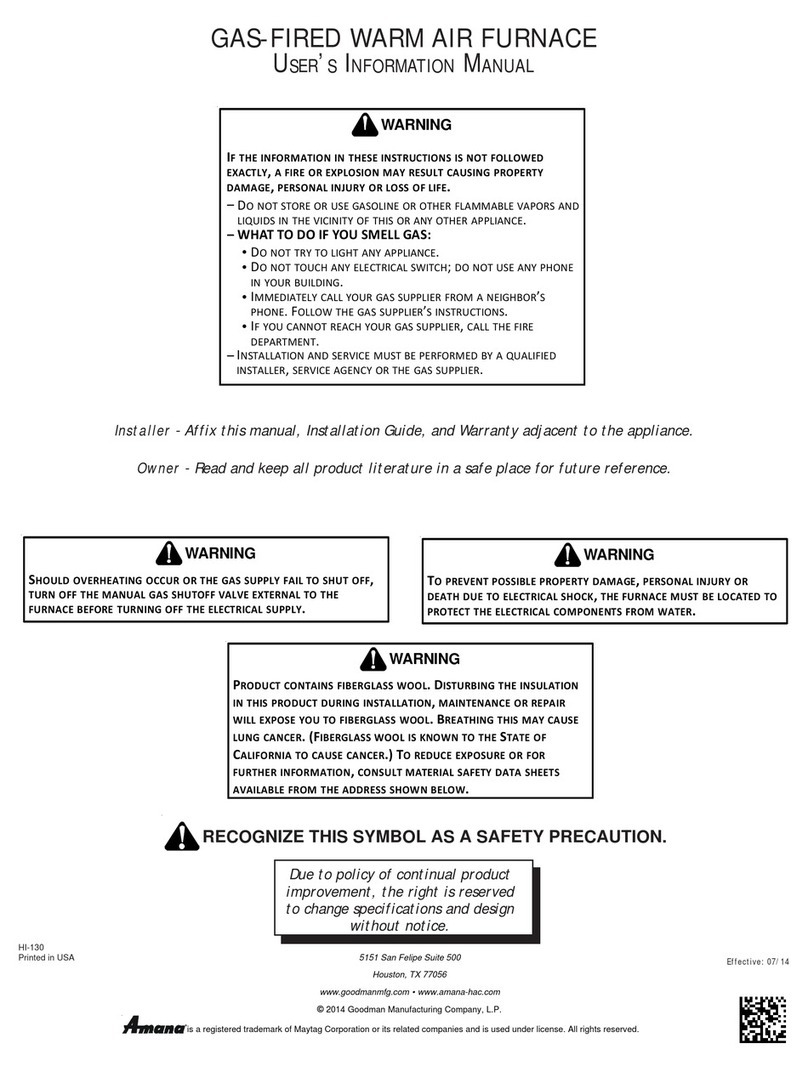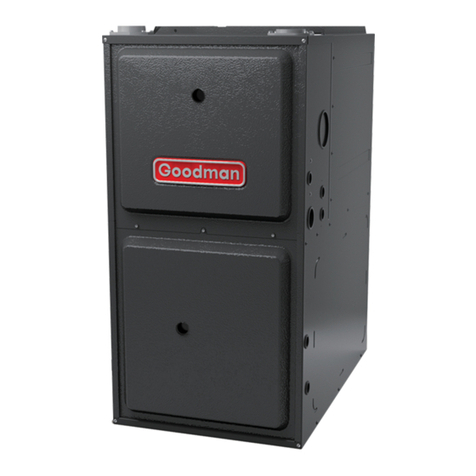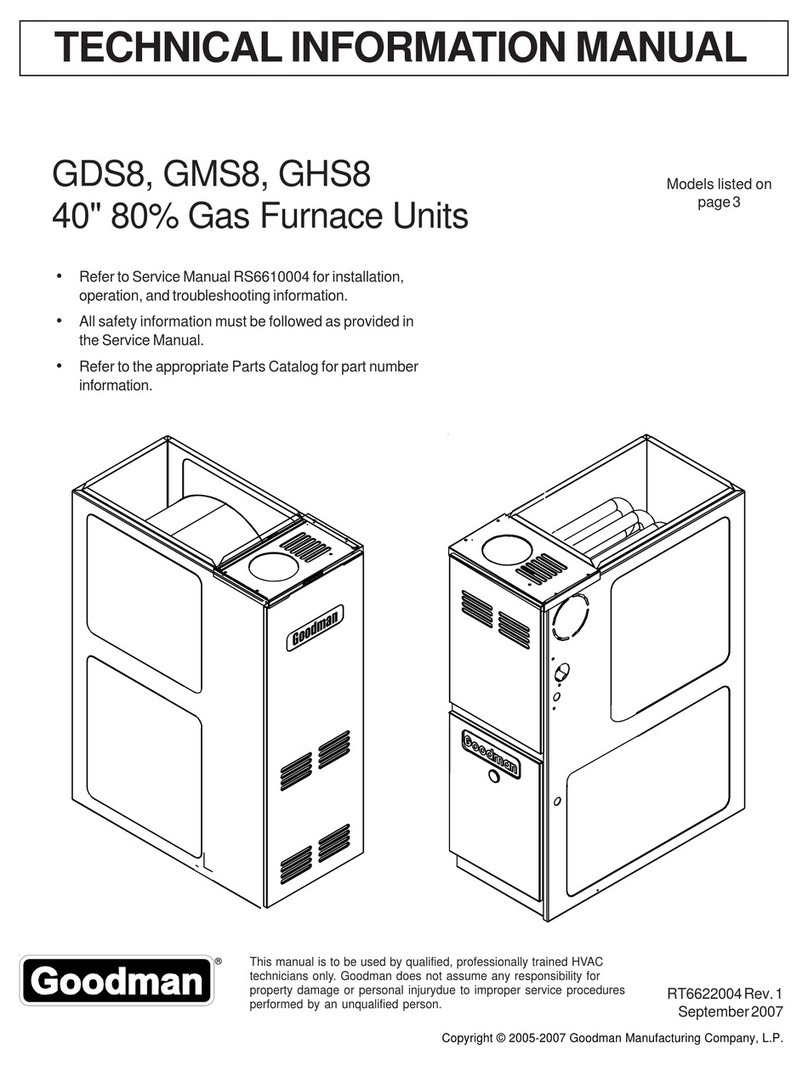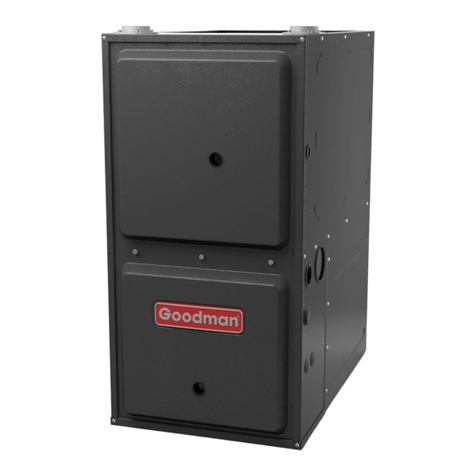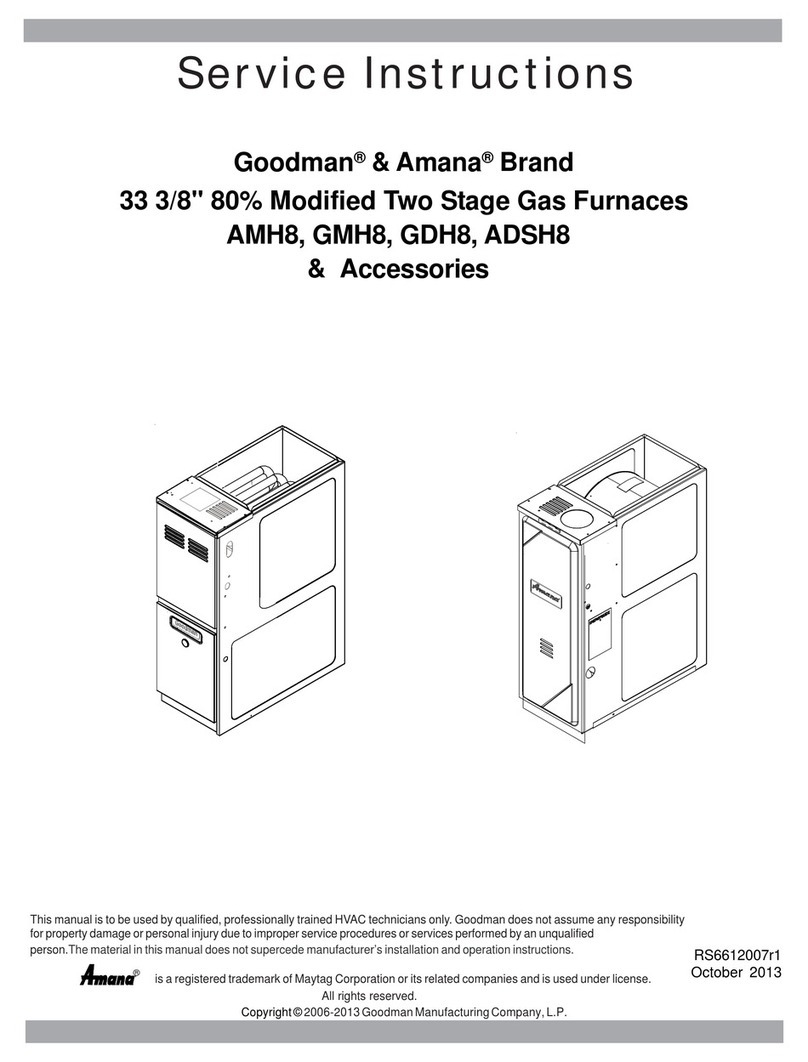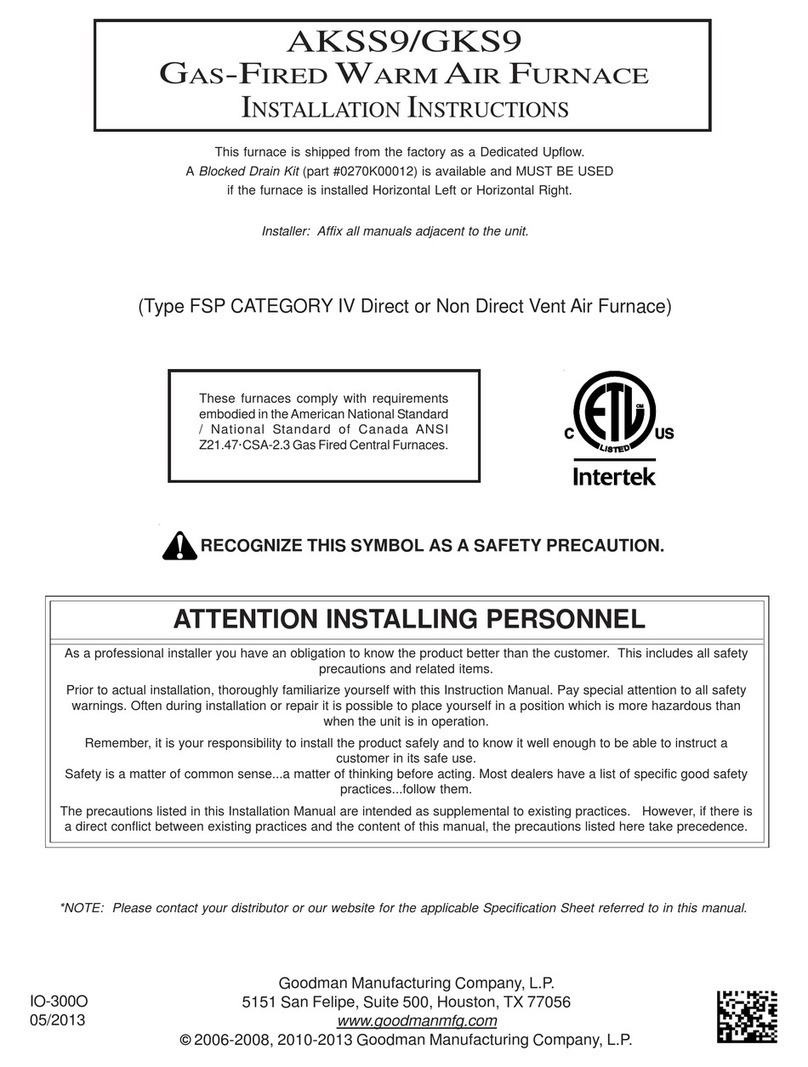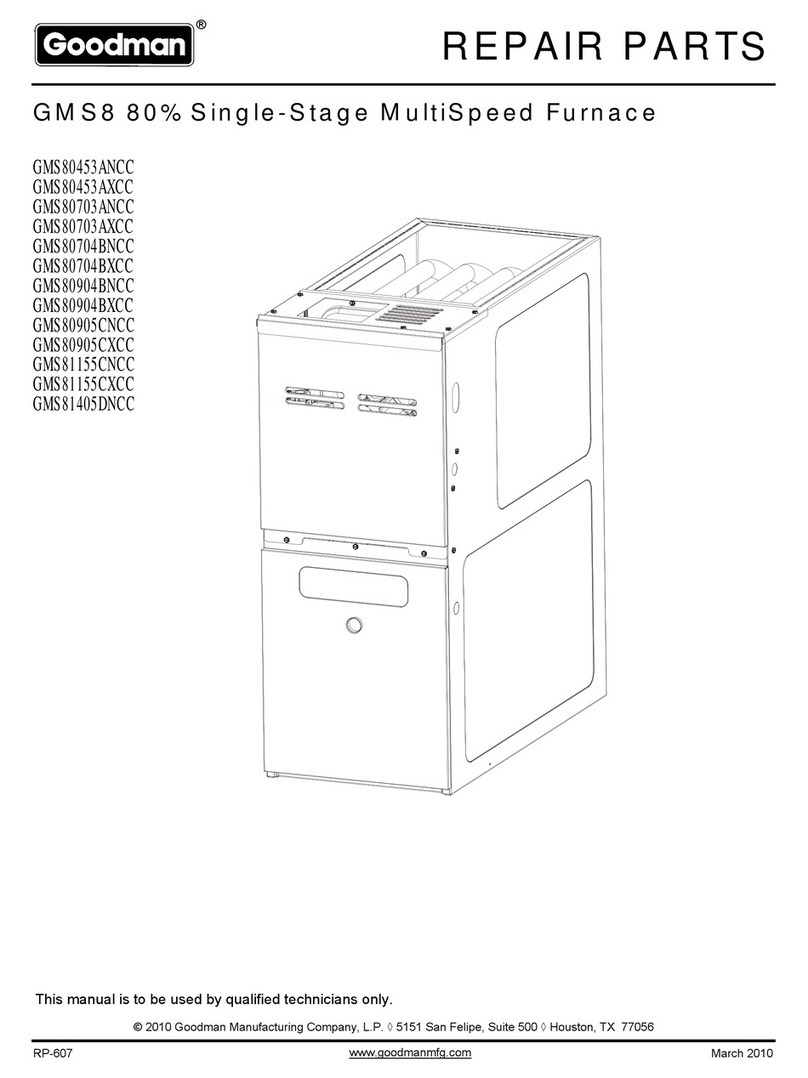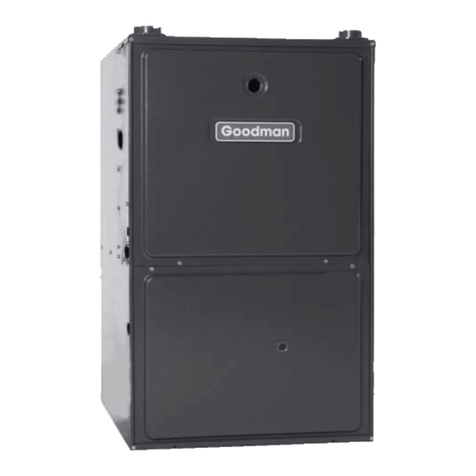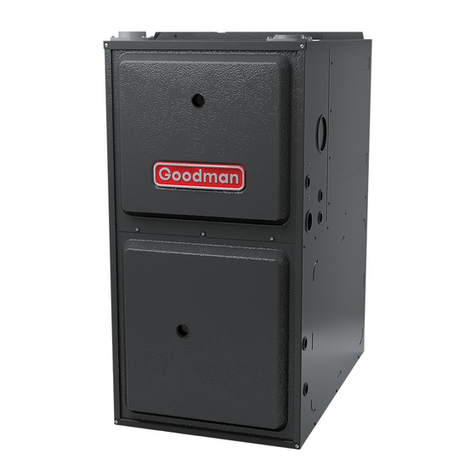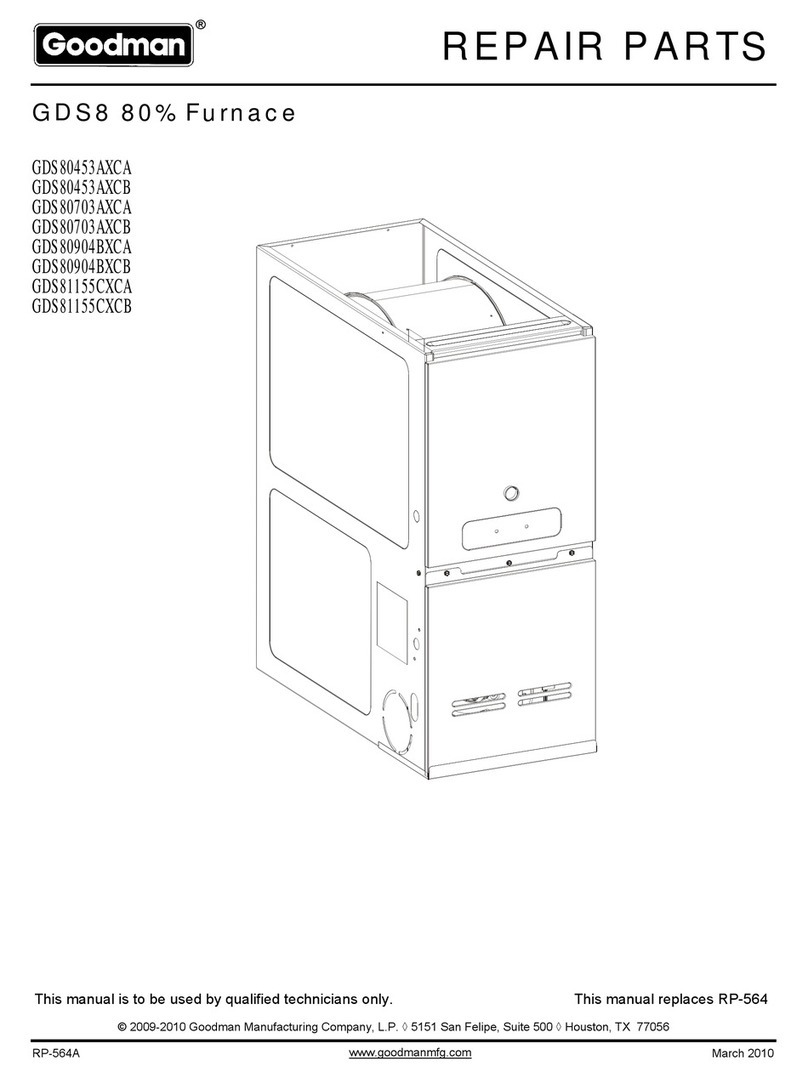
6
SHIPPINGINSPECTION
Allunitsaresecurelypackedin shipping containers tested ac-
cordingtoInternationalSafeTransitAssociationspecifications.
Thecartonmustbecheckeduponarrivalforexternaldamage. If
damage is found, a request for inspection by carrier’s agent
mustbemade in writingimmediately.
Thefurnacemustbecarefullyinspectedonarrivalfordamage
and bolts or screws which may have come loose in transit. In
theeventofdamagetheconsigneeshould:
1. Makeanotationondeliveryreceiptofanyvisibledamage
toshipmentorcontainer.
2. Notifycarrierpromptlyandrequestaninspection.
3. Withconcealeddamage,carriermustbenotifiedassoon
aspossible- preferablywithinfivedays.
4. Filetheclaimwiththefollowingsupportdocumentswithin
a nine month statute of limitations.
• Original or certified copy of the Bill of Lading, or
indemnitybond.
• Originalpaidfreightbillorindemnityinlieuthereof.
• Originalorcertifiedcopyoftheinvoice,showingtrade
andotherdiscountsorreductions.
• Copy of the inspection report issued by carrier’s
representativeatthetimedamageisreportedtocarrier.
Thecarrierisresponsibleformakingpromptinspectionofdam-
ageandforathoroughinvestigationofeachclaim.Thedistribu-
torormanufacturerwillnotacceptclaimsfromdealersfortrans-
portationdamage.
ELECTROSTATICDISCHARGE(ESD)PRECAUTIONS
NOTE: Dischargebody’sstaticelectricitybeforetouchingunit.
Anelectrostaticdischargecanadverselyaffectelectrical com-
ponents.
Use the following precautions during furnace installation and
servicingtoprotecttheintegratedcontrolmodulefromdamage.
Byputtingthefurnace,thecontrol,andthepersonatthesame
electrostaticpotential,thesestepswillhelpavoidexposingthe
integratedcontrol moduletoelectrostaticdischarge. This pro-
cedure is applicable to both installed and non-installed (un-
grounded)furnaces.
1. Disconnect all power to the furnace. Do not touch the
integratedcontrol module or anywire connectedto the
control prior to discharging your body’s electrostatic
chargetoground.
2. Firmly touch a clean, unpainted, metal surface of the
furnacesnear the control. Any toolsheld ina person’s
handduringgroundingwillbedischarged.
3. Service integratedcontrol moduleor connectingwiring
following the discharge process in step 2. Use caution
nottorechargeyourbodywith static electricity; (i.e., do
notmoveorshuffleyourfeet,donottouchungrounded
objects,etc.). Ifyoucomeincontactwithanungrounded
object,repeatstep2beforetouchingcontrolorwires.
4. Discharge your body to ground before removing a new
control from its container. Follow steps 1 through 3 if
installing the control on a furnace. Return any old or new
controlstotheircontainersbeforetouchinganyungrounded
object.
TOTHEINSTALLER
Before installing this unit, please read this manual thoroughly to
familiarizeyourselfwithspecificitemswhichmustbeadheredto,
including but not limited to: unit maximum external static pres-
sure, gas pressures, BTU input rating, proper electrical connec-
tions,circulatingairtemperaturerise,minimumormaximumCFM,
andmotorspeedconnections.
IMPORTANTNOTETOTHEOWNERREGARDINGPRODUCTWAR-
RANTY
Yourwarrantycertificateissuppliedasaseparatedocumentwith
the unit installed by your contractor. Read the limited warranty
certificate carefully to determine what is and is not covered and
keep the warranty certificate in a safe place. If you are unable to
locate the warranty certificate please contact your installing con-
tractor or contact customer service (877-254-4729) to obtain a
copy.
IMPORTANT: To receive the Lifetime Heat Exchanger Limited
Warranty (good for as long as you own your home) and the 10-
year Parts Limited Warranty, online registration must be com-
pleted within 60 days of installation. Online registration is not re-
quiredinCalifornia or Quebec. Complete warranty details are
availablefromyour local dealer or, for Goodman®brandprod-
ucts,visit www.goodmanmfg.comandforAmana®brand prod-
ucts,visit www.amana-hac.com.
ToregisteryourGoodman®brandunit,gotowww.goodmanmfg.com
and click “Warranty Registration”. Complete the registration
asprompted.
To register yourAmana®brand unit, go to www.amana-hac.com
andclickon “Warranty Registration”. Complete the registra-
tionasprompted.
Product limited warranty certificates for models currently in pro-
ductioncanbeviewedatwww.goodmanmfg.comorwww.amana-
hac.com. If your model is not currently in production or does not
appearonthewebsite,pleasecontactyourinstallingcontractoror
contact customer service at (877-254-4729) to obtain a copy of
yourwarrantycertificate.
EachproductoverviewpagecontainsaProductWarrantylink;by
clickingonityouwillbeabletoviewthelimitedwarrantycoverage
forthatspecificproduct.Toviewwarrantyregistrationinformation,
clickontheProduct Warranty text on the leftnavigationpanelon
thehomepageofeachwebsite.TheOnlineProductRegistration
pages are located in this same section.
